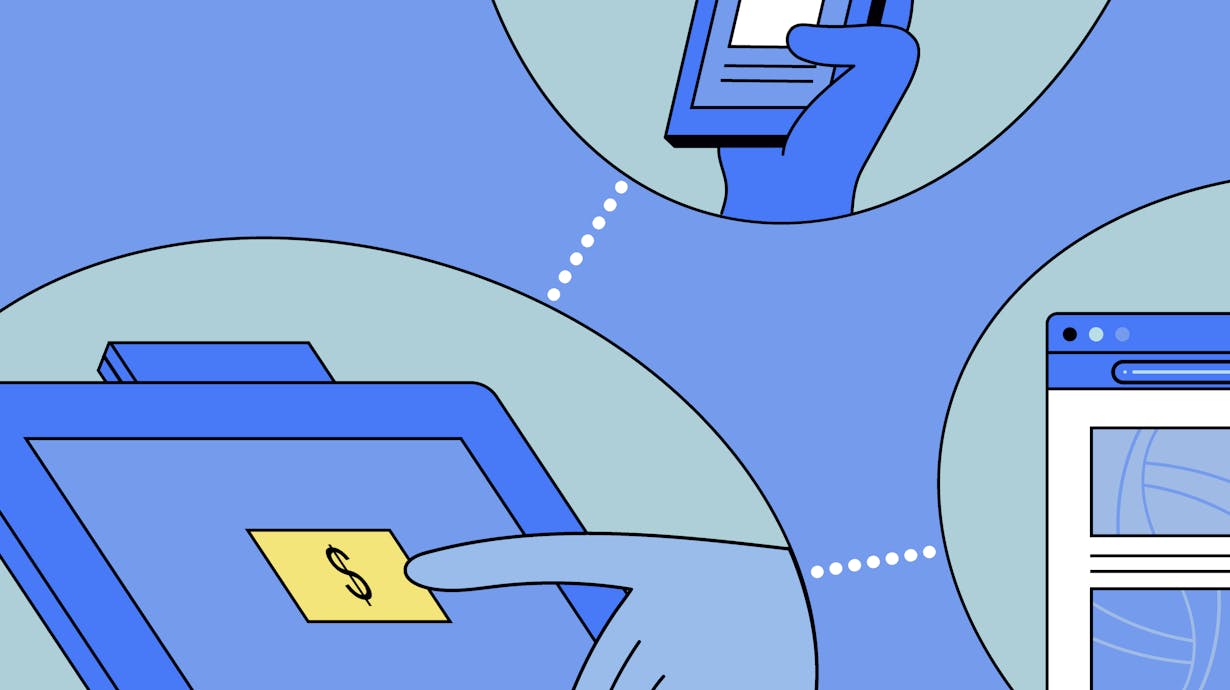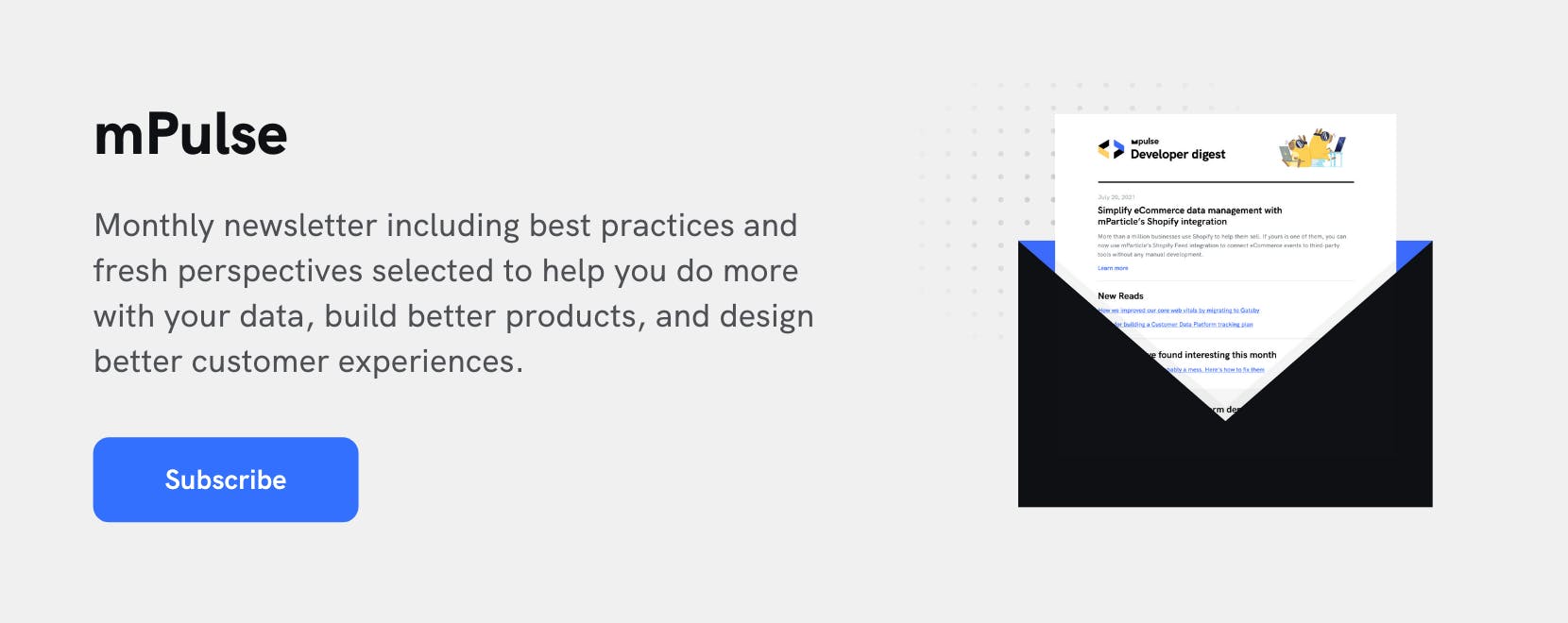Unifying online and offline data to create a connected customer experience
Customers are now engaging seamlessly across both digital and in-store channels, and the experiences you deliver need to be equally seamless. Being able to integrate online and offline data in real time is critical not only to supporting data privacy, but also to making your customers feel valued.

Digital engagement has been increasing significantly as the COVID-19 pandemic has pushed shoppers and businesses online. Now, with in-person shopping making a comeback, the way consumers buy has never been more fluid. It’s critical, therefore, for brands to deliver consistent, thoughtful experiences across both physical and digital touchpoints.
Large brands like Burger King, Jack In The Box, and Marks & Spencers are already investing in data infrastructure that enables them to integrate online and offline data into one holistic view of their customers. But you don’t need Burger King’s resources to make it happen.
Below, we explain:
- Why integrating online and offline strategies is so crucial for businesses today
- How to unify online and point-of-sale (POS) data with mParticle
- How you can turn that data into a connected customer experience (CX) that drives revenue
Why you need to integrate online and offline data
In a market where every company has access to mountains of raw data living in disparate systems, the advantage goes to those that can connect the dots most effectively and turn insights into a better experience for customers.
Today’s customer experience is omnichannel
Today’s consumers don’t experience your brand in a fragmented way—they move seamlessly across channels, both in digital and IRL (in real life) space. Everything from the in-store experience, to email campaigns, to web and mobile experiences represent one holistic experience in customers’ minds.
A less-than-stellar experience in one channel—or an inconsistent experience across channels—therefore, detracts from the overall customer experience.
Being able to unify data from across every touchpoint and leverage it to orchestrate engaging, personalized, and intuitive experiences for customers across channels is critical.
Holistic customer profiles make both online and offline strategies more effective
When you unify online and offline data, you can create more comprehensive and holistic customer profiles and enable personalization beyond simply pulling a customer’s first name into your email subject line.
Despite the potential value, many teams struggle to deliver a unified online and offline experience. That largely comes down to challenges in connecting and harnessing data. Often, teams aren’t able to:
- Collect in-store and POS data
- Unify in-store data in the same system with digital touchpoints
- Resolve data from different touchpoints into holistic customer profiles
Still, it’s worth solving for these challenges because of how valuable those connected customer profiles can be. We’ll talk more about specific strategies for putting your them to work later, but here’s a sneak peek:
- Loyalty programs become more engaging
- Deep personalization can be automated and scaled
- Marketers can get more creative with their campaigns
Without a connected experience, you risk alienating customers
Customers place trust in your brand when they consent to their data being collected. Failing to use that data to improve the customer experience is the easiest way to break that trust.
Here’s an example from a large U.K.-based retailer that recently overhauled their data stack to help create more opportunities for personalization and better CX. By collecting in-store food purchase data, they can identify which customers are likely vegan or vegetarian. Prior to being able to collect POS data and unify it with data from apps and web, the company was at risk of alienating customers by pushing products that conflict with their values.
Now, the team can leverage POS data to build audiences of likely vegan customers and avoid pushing non-vegan products (like leather) to them.
If you don’t, your competitors will
At the end of the day, you need to offer customers a great experience because if you don’t, your competitors will. CX is one of the most effective and enduring competitive advantages in most industries today.
Just take a look at McKinsey’s Next in Personalization 2021 Report: according to their data, “seventy-one percent of consumers expect companies to deliver personalized interactions. And seventy-six percent get frustrated when this doesn’t happen.” Seventy-five percent of respondents highlighted the importance of personalization that makes it easy to navigate both in-store and online.
Those who aren’t happy with the customer experience or level of personalization are primed to defect—with 75% switching up the store, buying method, or product they chose since the COVID-19 pandemic began.
How to unify online and offline data with mParticle
Here’s some good news: unifying your data across offline and online channels is simple with the right tooling in place.
mParticle makes it easy to collect engagement data from a POS system in-store—as well as data from digital touchpoints such as mobile apps and web—and tie all of this data to the same customer profile.
Step 1: Connect your data sources
The first step is to start collecting data from POS systems, mobile apps, websites and more into mParticle.
The best CDPs make this super quick and easy with pre-built integrations. mParticle, for example, offers more than 300 integration partners to make quick work of piping your data into our platform with just a few clicks and your API key.
Step 2: Identity resolution
Identity resolution is the crucial step that turns disconnected, omnichannel data into one connected customer profile. With mParticle, it’s also the easiest step—because it happens automatically.
When you pipe data from all your inputs into mParticle, our CDP pulls together a complete profile of each customer, which includes identity resolution based on both online and offline data from your website, app, POS, and any other sources you connected.
mParticle ID stitches together fields like customer ID, email, credit card data, device IDs, and more to create a single, unified profile of each customer, enriched with attributes like demographic data, location, behavior (like purchases and cart abandonment), loyalty details, and more (including custom ones).
These profiles can be sent to downstream tools and used to build audiences in mParticle.
Step 3: Setup connections
Next, you’ll set up connections between data sources and your downstream tools including analytics (like Mixpanel or Indicative) and marketing (Mailchimp, Braze and Google, Facebook, etc.) tools.
With mParticle, this process is completely codeless. You can connect with forwarding rules to control which data gets forwarded.
We’ll talk more about how Burger King operationalized their customer profiles later, but here’s a look at how they set them up using mParticle:
- Inputs: Tillster (POS), Radar (location/geofencing), and the Burger King mobile app
- Outputs: Amplitude (analytics), Braze (email marketing, push notifications, and in-app messaging), and Branch (deep-linking)
Four use cases you can try
With access to high-quality profiles that stay up-to-date in real time, there are a ton of ways you can deliver more connected experiences. Let’s look at four key ways to create a more connected CX, with a few examples of how mParticle customers are already doing it.
Personalization that goes deeper than [FNAME]
Personalization can be an incredibly powerful way to more effectively sell to customers and improve engagement—but it has to go beyond tacking someone’s first name onto the intro line of an email campaign.
McKinsey’s report found the top personalization actions for consumers include:
- Relevant product and service recommendations and targeted promotions
- Tailored messaging
- Behavioral triggers
- Timely communications based on key moments in the customer journey
With easy access to deep, enriched customer profiles, as well as the ability to quickly activate those profiles, the sky’s the limit on how you can use deep personalization for your brand.
Let’s go back to the example from a large retailer based in the UK: prior to the COVID-19 pandemic, most of their customers shopped in-store. Before the team implemented mParticle, that POS data was a black box—they couldn’t see or use it.
By unifying POS and online data to single customer profiles with mParticle, they can now personalize based on everything from LTV to in-store purchases to returns and complaints.
As we mentioned above, they used that data to create a customer segment of “likely vegan shoppers.” That’s data from their POS system that they can now use to personalize digital experiences—for example, suppressing that list from a Christmas email campaign promoting turkey or ensuring leather products aren’t recommended to those customers on the website.
Creative campaigns with geofencing
One of the chief benefits of integrating online and offline data is the creativity it enables. For proof of this, look no further than Burger King’s Whopper Detour campaign.
Designed to help grow the Burger King app and boost engagement among users, the campaign used Radar’s SDK, Places, and Geofences features to track when customers who’d downloaded the Burger King app were near a McDonald’s restaurant.
When customers came within 600 feet of any geofenced McDonald’s, Radar pushed their information into mParticle, where it was unified with data from across other sources. Once this complete data set was then connected to Braze, it was used to trigger a real-time push notification with an offer to buy a Whopper for 1¢ if they ordered in the next hour. Customers who accepted the offer were taken to a purchase screen powered by Burger King’s POS system, Tillster.
The campaign only ran for a week, but it won the Grand Prix and Cannes Lions and generated outstanding results for the business:
- 6 million app downloads
- A 300% increase in mobile order value
- 40x higher coupon redemption rate
- $15M projected annual spend from participating customers
Smarter, more engaging loyalty programs
The experiences and incentives that drive customer loyalty vary from one person to the next, but for the most part, loyalty programs have largely ignored that fact. We segment email campaigns and retargeting ads, so why not loyalty programs?
Armed with holistic customer profiles, you can create personalized loyalty experiences that offer customers the incentives they actually want and rewards that match the way they purchase.
Historically, loyalty programs have been tricky for companies that see both online and in-store shopping—because they haven’t been able to marry the data from both sources.
Giant Eagle had the same problem before they implemented mParticle. Their loyalty program data lived in one tool, while other data like emails, household demographics, and geographic details lived elsewhere—disconnected from the loyalty program.
By unifying that data in mParticle, the company was able to revamp and expand the loyalty program, including adding tiers and individually personalized promotions for loyalty members. And the results speak for themselves:
- More than 10% participation rate for personalized Perks Challenges
- 8–15% boost in revenue among customers who engage with the new personalized program
Automation that drives loyalty
Personalization and creative campaigns are all well and good—as long as you can actually scale them. That’s where automation can help.
Let’s look at another example from our large retailer: the team created a promotion that rewards one loyalty member per day with their in-store shopping for free. When in-store shoppers check out, they scan their loyalty card and the POS system pipes the customer’s name, loyalty ID, and checkout total into mParticle.
That data gets forwarded to Salesforce, then, once a day, powers a personalized email informing the winning customer their shopping is free.
By integrating online and offline point-of-sale (POS) data, brands can craft the kind of curated shopping experiences that make customers feel special. This goes far beyond simply dropping the customer’s name into an email line, instead taking into account dimensions such as geolocation data, past purchases, and payment history to adapt the experiences contextually in ways that remove friction and help customers accomplish goals.
VP of Product at Bounteous
Key takeaways
- Today’s consumers expect a seamless, personalized experience across every channel and touchpoint with your brand
- You can quickly and easily integrate your online and offline data using mParticle
- Once integrated, holistic customer profiles enable deep personalization, creative marketing campaigns, more engaging loyalty programs, and automation to scale personalization
Latest from mParticle
Try out mParticle
See how leading multi-channel consumer brands solve E2E customer data challenges with a real-time customer data platform.
Startups can now receive up to one year of complimentary access to mParticle. Receive access





